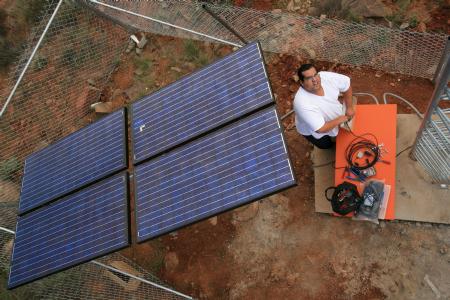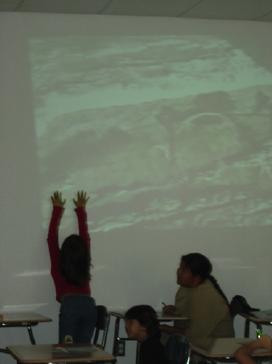
|
|
|
|
February 10, 2009
HPWREN Works with Tribal Digital Village Network (TDVNet) to Upgrade Pala Native American Learning Center Internet Connectivity by Kimberly Mann Bruch
The Pala Native American Reservation is nestled in a valley almost 60 miles northeast from Cabrillo (Point Loma) tidepools - that's a lengthy drive after a long day of school and/or work. However, recent upgrades to the Pala Learning Center Internet connection makes it possible for the community to easily access not only real-time cameras at the coast, but also interact in real-time with scientists, interpretation rangers, and educators at the coastal National Park as well as science and education sites throughout the world.
That is, HPWREN researchers recently worked with the Tribal Digital Village Network (TDVNet) team to boost the bandwidth at the Learning Center so that the tribe's growing number of students and community members can simultaneously participate in education programs via their wireless network connection. Specifically, HPWREN PI Hans-Werner Braun worked with TDVNet administrator Michael Peralta to implement a 45Mbps link into the Learning Center. This upgraded link will allow for bandwidth-heavy distance education activities and also enable HPWREN researchers to learn more about remote learning requirements for data networks, with a special focus on real-time needs. The additional bandwidth allows more of the Center's 200 participants (consisting of both youth and adults) to take part in the current and future programs that require high-speed network connectivity, including for multiple participants simultaneously accessing video-based distance-education opportunities. "TDVNet was happy to receive the guidance from HPWREN PI Hans-Werner Braun for Pala's upgrade," says Michael Peralta. "Over the years we've developed a great working relationship with the HPWREN research team and really hope to continue our efforts to maintain and upgrade our own network as our bandwidth needs increase." "Our youth and adult programs will greatly benefit from this network upgrade," explains Pala Learning Center Director Doretta Musick. "Our students learn so much about science and technology through the distance learning programs at Cabrillo tidepools and beyond. In the past, though, our connection has just not been hefty enough to support those types of programs while other students are using the same network to complete homework assignments and so on."
The distance learning programs referred to by Doretta Musick include the HPWREN pilot project, Live Interactive Virtual Explorations (LIVE), which is headed up by Hans-Werner Braun, Jim Hale, and Kim Bruch. The three work closely with collaborators at the National Park Service, enabling an array of hard-to-reach education sites to engage with marine biologists and education park rangers at the intertidal area at Cabrillo National Monument. Additional distance learning activities enabled by the network upgrade include online college classes as well as real-time conferencing between the staff and educational resource communities. Additional photos of the link upgrade are found at /Photos/20090120. |

